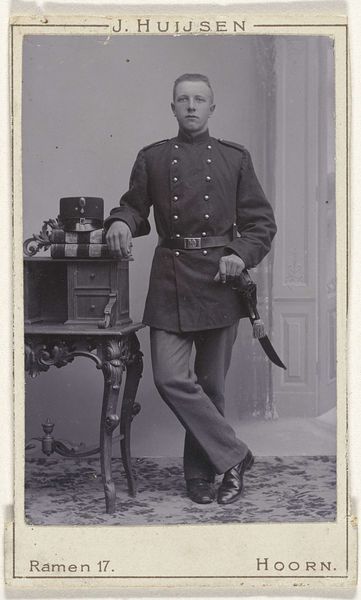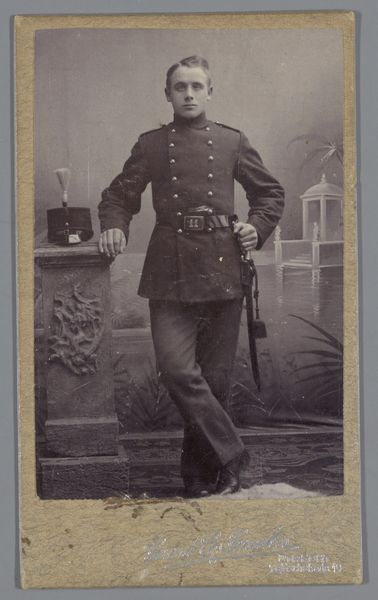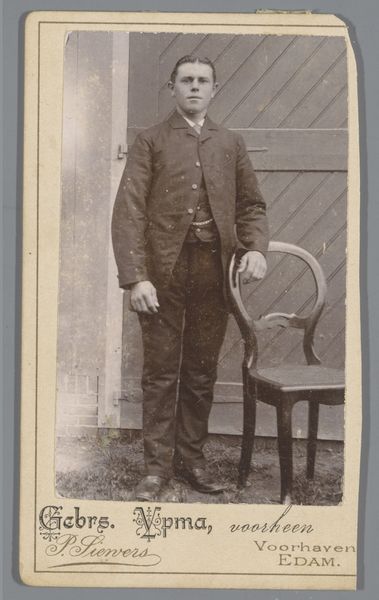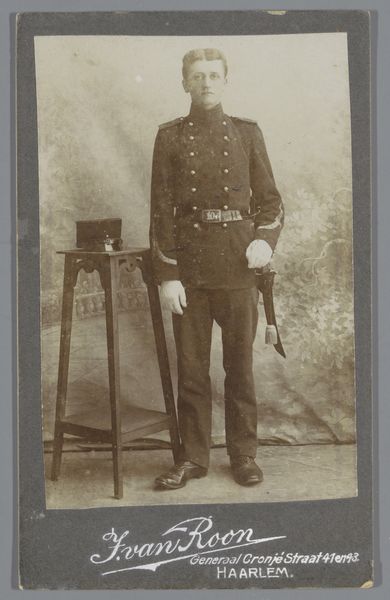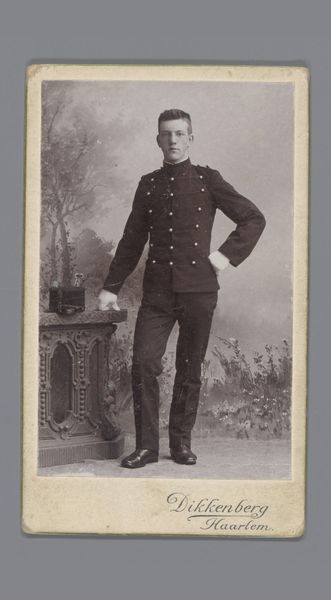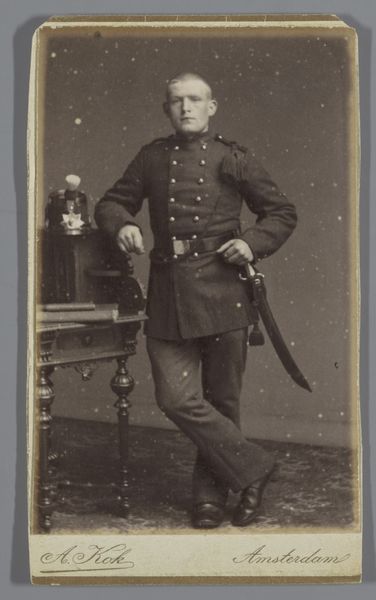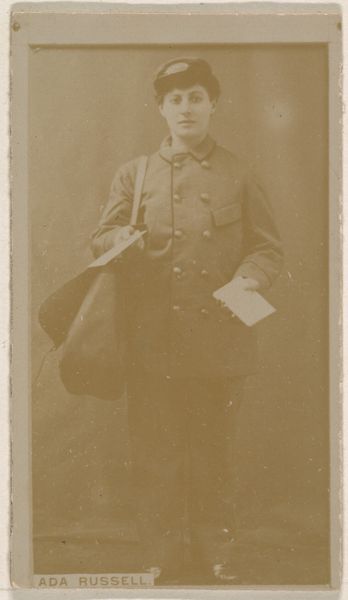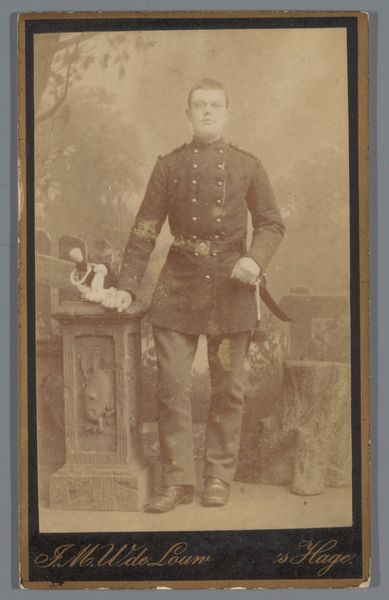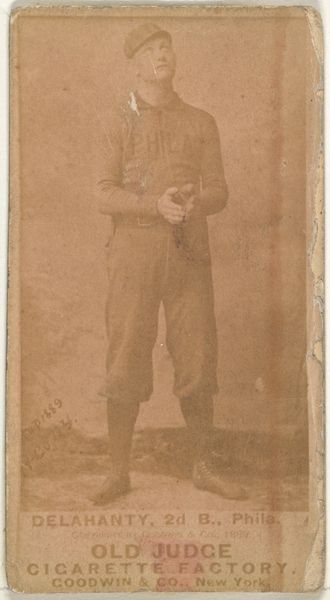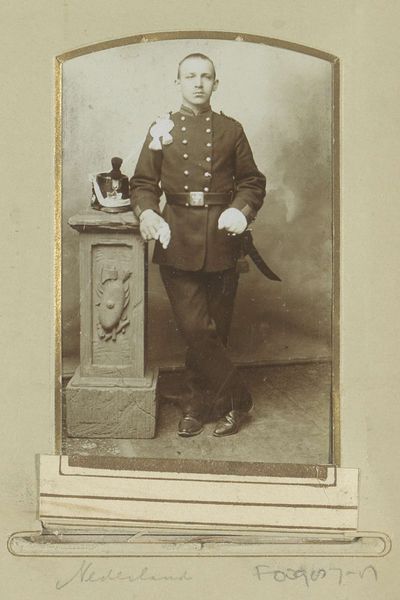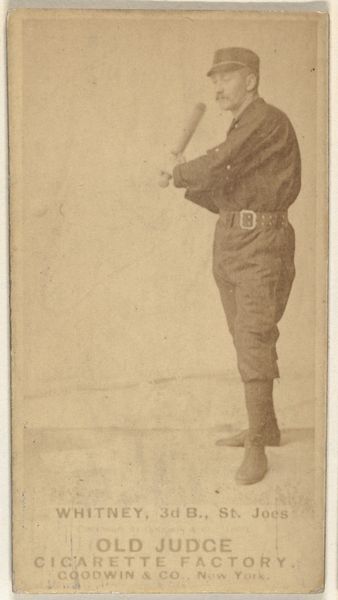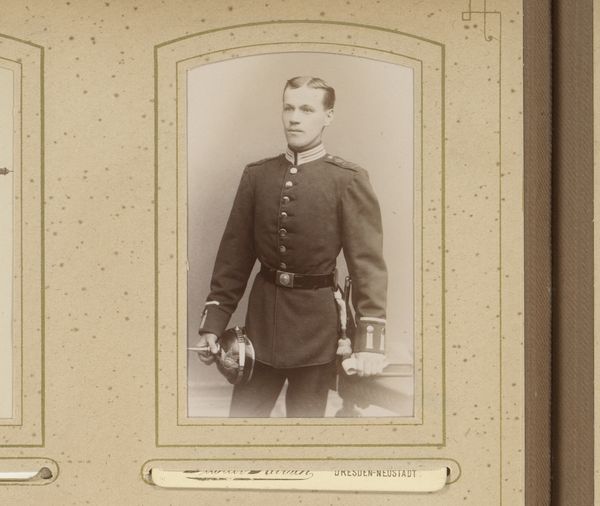
photography, gelatin-silver-print
#
portrait
#
photography
#
historical fashion
#
gelatin-silver-print
#
19th century
#
history-painting
Dimensions: height 104 mm, width 65 mm
Copyright: Rijks Museum: Open Domain
Curator: The portrait before us is titled "Portret van een onbekende jongeman in uniform," or Portrait of an Unknown Young Man in Uniform. Created sometime between 1890 and 1910 by Theodorus Ferdinant van de Pol using the gelatin silver print technique, it offers a glimpse into the rigid formality of the era. Editor: He certainly seems steeled in his gaze and posture. Everything from his buttoned tunic, leather belt and, rather imposing sword gives this portrait a palpable weight, doesn’t it? I wonder about the labour of fashioning those materials for a single garment and piece of equipment like the sword hilt. Curator: Indeed, and it’s this very rigidity, literally manufactured from dye, fabric, leather, and metal, that speaks volumes. The uniform, of course, is never merely clothing. It signifies belonging, discipline, and power structures. Note the context of the time; which imperial ambitions were being enacted and how were colonial fantasies made possible by way of national identity solidified in attire? Editor: Right. And this photo is a product too. Do we know about photographic processes in Van de Pol's studio? Think of the alchemy of chemicals on the silver gelatin, the development process, all geared towards mass production for eager patrons looking to document their families or the next generation enlisted into state armies. The final print and its distribution speaks to a market driven by political momentum. Curator: Precisely. There is such cultural capital associated with military service. But there are also nuances: the soft gloves laid on the chair—props used for effect or symbolic clues about the subject and the society. Consider too that Van de Pol had a studio in Amersfoort, The Netherlands; how was this portrait implicated in class, access, power at the local level? The young man looks proud, ready for a noble task, but is there any indication about what the implications would be? Editor: I agree. So much of the photographic material speaks of a controlled, aspirational identity. Thinking about those material traces gives this photograph the same type of energy found in many historical paintings that depict war scenes. Curator: Absolutely, it deepens the experience of examining its narrative and production. Editor: I think that is an excellent point for consideration. Thank you for unpacking it together.
Comments
No comments
Be the first to comment and join the conversation on the ultimate creative platform.
